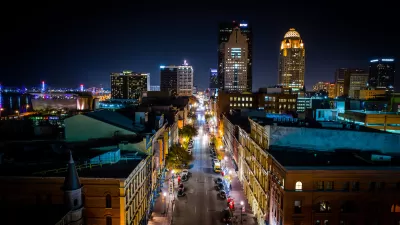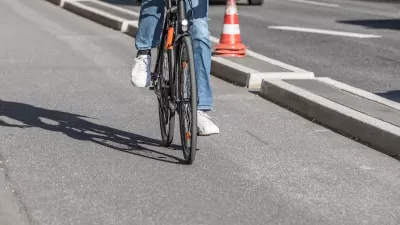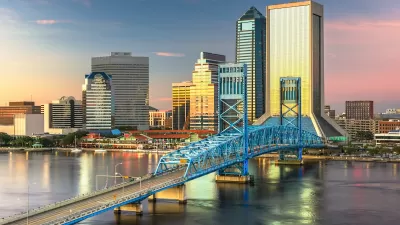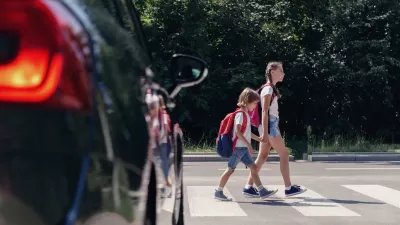The new tool highlights the streets that pose the biggest risk to pedestrians and other road users.

Officials in Louisville, Kentucky have a new tool to assess which local roads are in need of safety improvements as part of its Vision Zero effort to elimiate traffic deaths, reports Jacob Munoz for Louisville Public Media. “More than 900 people died in Louisville from surface road crashes from 2016-23, and nearly 4,200 others were suspected to have been seriously injured in collisions.”
“Louisville Metro Government’s Vision Zero initiative, which aims to strengthen traffic safety, released its first High Injury Network map in January. The tool provides a priority list of 53 corridors that officials can consider for safety improvements.” The roads in the network make up 5 percent of non-interstate miles in the city, but experience over half of fatal and serious injury crashes. “Most of the high-risk roads identified on the map are state-owned, meaning the Kentucky Transportation Cabinet would need to sign off on improvement projects,” Munoz adds. The city says the map is already helping guide decisions on infrastructure improvements.
FULL STORY: Louisville’s High Injury Network could help prioritize improving safety on certain roads

Trump Administration Could Effectively End Housing Voucher Program
Federal officials are eyeing major cuts to the Section 8 program that helps millions of low-income households pay rent.

Planetizen Federal Action Tracker
A weekly monitor of how Trump’s orders and actions are impacting planners and planning in America.

The 120 Year Old Tiny Home Villages That Sheltered San Francisco’s Earthquake Refugees
More than a century ago, San Francisco mobilized to house thousands of residents displaced by the 1906 earthquake. Could their strategy offer a model for the present?

HSR Reaches Key Settlement in Northern California City
The state’s high-speed rail authority reached an agreement with Millbrae, a key city on the train’s proposed route to San Francisco.

Washington State Legislature Passes Parking Reform Bill
A bill that would limit parking requirements for new developments is headed to the governor’s desk.

Missouri Law Would Ban Protections for Housing Voucher Users
A state law seeks to overturn source-of-income discrimination bans passed by several Missouri cities.
Urban Design for Planners 1: Software Tools
This six-course series explores essential urban design concepts using open source software and equips planners with the tools they need to participate fully in the urban design process.
Planning for Universal Design
Learn the tools for implementing Universal Design in planning regulations.
Ada County Highway District
Clanton & Associates, Inc.
Jessamine County Fiscal Court
Institute for Housing and Urban Development Studies (IHS)
City of Grandview
Harvard GSD Executive Education
Toledo-Lucas County Plan Commissions
Salt Lake City
NYU Wagner Graduate School of Public Service





























